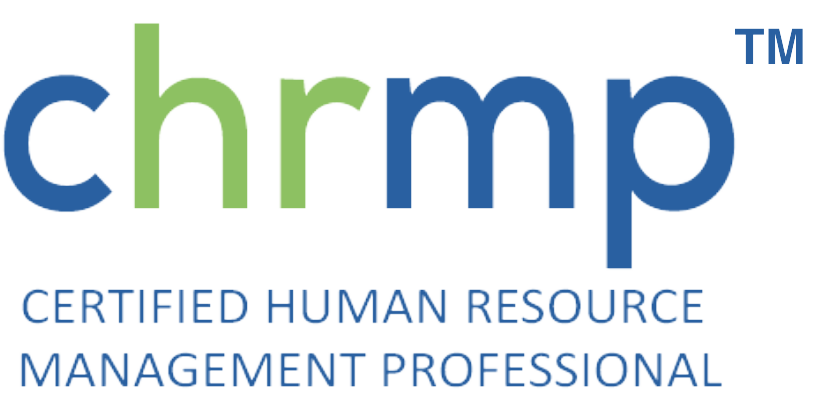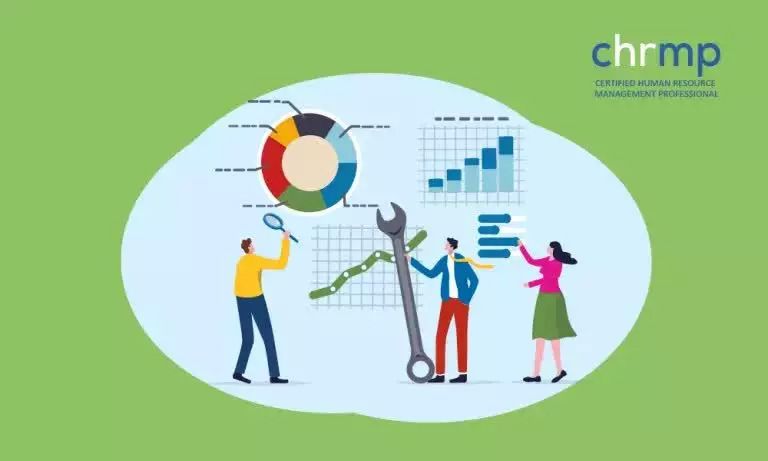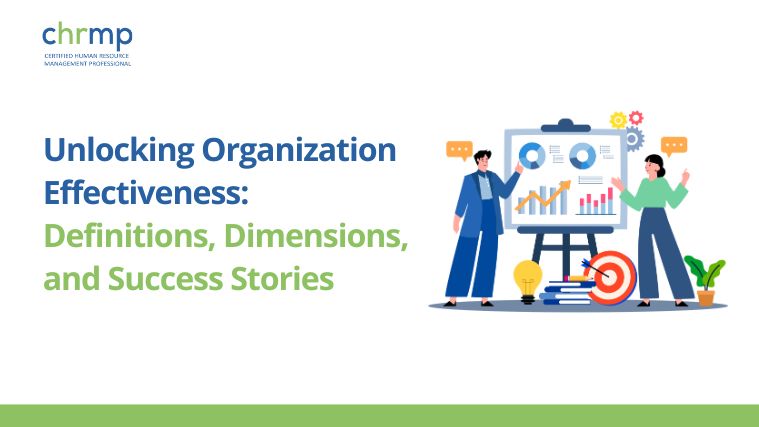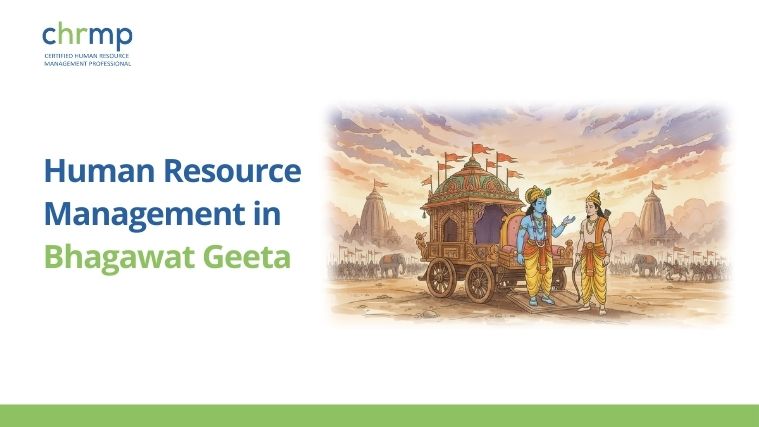HR Analytics is the most significant revolution in HR in recent times. It has transformed the way experts are interpreting, analyzing and applying HR functions, to improve the performance metrics indices of organizations.
However, we are usually not able to understand the minor but definitive differences between HR Analytics, People Analytics, Workforce Analytics and Talent Analytics.
The purpose of the blog is to clarify the differences between the above four.
TABLE OF CONTENT
1. Definitions
1.1. HR Analytics
We have dealt with HR Analytics in detail in the 5 blogs, which CHRMP has published earlier. The readers may refer to them. However, to refresh our memory, we may define HR Analytics as below:
HR Analytics is the process of measuring the impact of HR metrics, such as time to hire, retention rate etc., on HR performance metrics. (microstrategy.com ). The author requests the readers to go through the following blog also, which we have published earlier.
HR Analytics: The Meaning and Importance
In the above blog post, we have discussed different aspects of HR Analytics: Definition, Types of Analytics, Advantages, Disadvantages, challenges & Future.
1.2. People Analytics
We may most simply define People Analytics as a process, where HR leaders apply a mix of statistical practices, technology and their individual expertise, to large sets of business metrics and employee data.
This process results in better decision-making and a way to show concretely, the return on competitive talent and people investments. (surveygizmo.com )
1.3. Workforce Analytics
After a literature survey, we have shortlisted the following two definitions from two references.
- We use Workforce analytics, which is a part of HR analytics, to track and measure employee related data metrics and optimize organization’s human resource management metrics and decision-making. The field focuses on much more than hiring and firing, and also by concentrating on the return on value for every hire. (sisense.com)
- Workforce analytics is an term referring specifically to employees of an organization. It includes on-site employees, remote employees, gig workers, freelancers, consultants, and any other individuals working in various capacities in an organization. (hrtechnologist.com)
1.4. Talent Analytics
In Talent Analytics, we try to focus on applying statistics and technology, to large sets of people, in order to make better organizational and operational decisions.
Much like other specific subsets of larger statistics, talent analytics uses a variety of BI tools and systems to create a more holistic and data-driven view of a company’s staff. This way, companies can make the best decisions based on actual results and success. (sisense.com )
2.0 Differences Between HR Analytics, People Analytics, Workforce Analytics and Talent Analytics
2.1 Interchanging of the terms HR Analytics, People Analytics, Workforce Analytics and Talent Analytics
It is the distinct opinion of the author that HR Analytics is a broader term, which encompasses People Analytics, Workforce Analytics and Talent Analytics. Further, though their processes may be different, yet the goal is always the same, which is to enhance business decisions. The above proposition of the author is supported by the reference hrtechnologist.com .
They clearly say that People Analytics is a synonym of HR Analytics. The only difference is that People Analytics is technically applicable to people. The above proposition of the author is further proven by the reference harver.com. In their blog on Talent Analytics, they mention the following:
Sometimes people refer to Talent Analytics as Workforce Analytics, Human Capital Analytics or Human Resource Analytics. All these phrases basically mean the same thing. Hence, do not let the terms confuse you much more.
Not with standing the above, we have made an attempt to elucidate the differences between these four terms. Also, it is worth mentioning here, that people are using these four terms separately, throughout the world. At the same time, we must keep it in mind that they are integral to each other.
2.2 Difference between People Analytics and Workforce Analytics
Following are the differences between the two.
- Workforce Analytics and People Analytics are the two different concepts, which work in conjunction with each other.
- People Analytics focuses on Analytics applied to personnel and hiring, whereas the Workforce Analytics focuses more on assessment and tools used to drive these decisions.
Suppose a candidate has come for an interview. If you use a set of questions that are decided by data metrics studied from your employees and other candidates, it is the Workforce Analytics in application.
However, when you see the answers given by candidate, and compare them to other answers, from other successful candidates – turned employees this is called People Analytics (reference: furstperson.com )
- As per reference www.lab.one, in their blog entitled ‘People Analytics vs Workforce Analytics: What is behind these names’, gives their opinion as follows:
People Analytics is a data metrics driven approach to manage people at work and analytics is applied to people issues like hiring, performance metrics management metrics, compensation and retention etc.
However, also as per above reference, the author of the book ‘The power of people’ describes Workforce Analytics as below:
Workforce Analytics is the discovery, interpretation and communication of meaningful patterns in workforce related data metrics to inform decision making and improve performance metrics. They see Workforce Analytics as a term, which encompasses people, robotics and other factors of the workforce.
2.3 The difference between People Analytics and HR Analytics
In the reference numericalinsights.com, the author Tracy Smith, a recognized Analytics expert, gives her opinion on this as follows :
- When HR Analytics began, the term ‘People Analytics’ did not exist
- Years later, People Analytics emerged and its proponents started telling that HR Analytics solves HR problems, but People Analytics solves business metrics problems.
But HR Analytics also solves business metrics problems. Hence, as per Tracy Smith, People Analytics is the duplicate name of HR Analytics.
2.4 Differences between HR Analytics, People Analytics, Workforce Analytics and Talent Analytics
As per the reference, crunchapps.com the author expresses the following opinion on the topic.
- Talented workforce is becoming the increasingly vital issue for improving business outcomes
- Hence, Workforce Analytics must cover best talent acquisition through Talent Analytics
- Though People Analytics, HR Analytics, Workforce Analytics are being used while interchanging them, yet they are not the same
- The difference, which the author gives are.
- HR Analytics captures and measures the functioning of HR Team with respect to KPI metrics (Key metrics, Performance metrics)
- On the other hand, People Analytics has limitless scope. It includes the approach of measuring and analyzing all the information related to HR, the entire workforce data and customer insights. After that, it knits them together to improve decision making.
- Workforce analytics encompasses the entire workforce and inclusion of AI and Robots, which will replace current jobs within an organization.
Sandi Warren, in her blog, Workforce Analytics and HR Analytics (activtrak.com ) gives the following opinion:
If you do a Google search for “workforce analytics”, you will be served up primarily HR-related topics. Why is that? The term “workforce analytics” is used by many Human resource metrics and organizations because it describes the type of data metrics collection and analysis the HR departments and job boards conduct, with regard to their work forces.
The usage of this data metrics has been applied primarily to measuring employee performance metrics, talent management and retention efforts. However, businesses are seeing the value of workforce analytics beyond HR. So, let’s expand its application beyond HR, to explore how it can be leveraged by other areas of a business metrics.
Workforce analytics can be measured by any department, any function, across teams and by employees themselves to understand how to measure productivity through performance metrics reviews, engagement, collaboration and more. This is the difference between modern Workforce Analytics and HR Analytics.
The author tried to scan literature for ascertaining the differences between Talent Analytics and Workforce Analytics and came to the following conclusions.
- Talent Analytics basically focuses on talent, its acquisition, choosing the best, based on statistical tools and latest technologies. Use of latest tools make it fool proof, in the sense that results are unbiased and free from human error and prejudices.
- Academies and universities are using Talent Analytics in an increasing way.
- Workforce Analytics is being used by software providers. It is helping in an adequate workforce planning of organizations
3.0 Conclusions
Based on the discussions in the preceding sections, we may arrive at the following conclusions: The four terms are used by interchanging. However, the following opinions have also emerged after scanning the existing literature on the topic:
- They are used by interchanging and serve the same goals of improving business decisions and performance metrics indices of organisations. However, the processes adopted may be different in each of them
- Experts often refer them to be synonyms of each other
- They are integral to each other
Literature Scan has enabled to find out the following distinct differences between Workforce Analytics and People Analytics:
- People Analytics focuses on analytics applied to personnel and hire, whereas, Workforce Analytics focuses more on the assessments and tools used to drive the decisions.
- People Analytics is a data metrics drive approach to manage people, hiring issues, performance metrics, management management, compensation and retention etc.
Workforce Analytics is the discovery and interpretation of meaningful patterns in the workforce related data metrics to inform decision making and improve performance. The most important thing about a good employee evaluation system is that it should provide an accurate picture of how well each individual performs. A key indicator of your company’s success or failure in today’s competitive environment is its ability to attract top talent which can be measured and tracked through company metrics .
It can help you identify potential problems before they become major issues. An effective human resources management metrics program must include both quantitative and qualitative data metrics collection methods. Quality of Hire: The ability to attract, engage, develop and retain high-performing employees. It’s about attracting people who are a good fit for your organization, developing them into productive members of your team and then retaining those individuals once they have been hired.
In other words, it’s all about how well you manage human capital. The first step in creating an effective quality of hire strategy is understanding what makes up this important metric. There are many different ways that organizations can measure their success at hiring top talent.
If you want to know what kind of person will fit into your organization best, then use a combination of personality tests and interviews with employees who have already been hired this will improve the quality of hire. A hiring process followed by a well explained job description, job offer, training programs for the employees and analytics and metrics in payroll can help ensure quality hire from the recruitment team.
The job board could understand the effectiveness of the job description and predict the benefit of the company through the conversion rate, offer acceptance rate, quality of hire, hiring process, service level, company metrics and performance reviews .
Measuring and maintaining the candidate experience, customer experience , productivity metrics, recruitment metrics, evaluation metrics , management metrics and performance metrics could ensure hiring manager satisfaction and a systematic job board.
You need to understand the strengths and weaknesses of every member of your team so that you can make sure everyone has access to training opportunities as needed. The progress can then be measured by maintaining performance metrics and productivity metrics .
When you are evaluating candidates, don’t just rely on their resumes; instead, interview them personally. To evaluate job applicants effectively, ask questions such as: “How did you get this position?” and “Why would someone like working here?”.
In order to determine whether or not there is any room for improvement within your department, you’ll first need to conduct some research by looking at previous evaluations from other departments. As part of your recruitment process, you may wish to consider using a psychometric test to assess candidates that are suited for the task .
For example, if you’re hiring people to work in customer service roles, you might find that certain traits are more common among successful call center agents than others by analyzing these results, you could develop a set of specific criteria that all new hires must meet in order to qualify for employment. use a variety of different types of measurements when assessing the effectiveness of your recruiting efforts.
There are many ways to collect information regarding your workforce. Some companies choose to gather demographic data metrics through surveys while others opt for direct observation. Many organizations also keep track of attendance records, time sheets and payroll reports. One way to see where you stand against competitors is to compare your own internal numbers with those of similar businesses through business metrics .
using statistical analysis techniques, you can discover patterns in your data metrics that allow you to predict future trends. The goal of benchmarking is to establish benchmarks that represent industry standards. Compare your current staffing levels with historical averages to ensure that your staff size remains consistent over time. Your business needs change constantly, which means that you must adapt on an everyday basis, your strategy to stay ahead of the competition which can be understood and worked on better through the tools used in business metrics .
This type of measurement allows managers to quickly spot areas of weakness and strength in their teams through the process of tracking the performance through management metrics. Measurements are used to gauge progress toward goals and objectives. Most employers prefer to hire individuals based on their skills rather than experience. They are often referred to as ‘soft’ measures because they cannot easily be quantified.
These tools enable you to analyze large amounts of data metrics efficiently. Employee engagement, Employee retention and Productivity. By measuring how well employees perform their jobs, you will have a clearer picture about what kind of training and development opportunities should be provided. You can use analytics to measure the impact of marketing campaigns, sales promotions, advertising strategies, etc. Analytics helps us understand our customers’ behavior so we can make decisions accordingly.
It’s important to know who your target audience is before deciding on the best approach to reach out to them. Different types of metrics can help measure and track the progress of the company.
Types of metrics are :
- Financial Metrics – These include analytics and metrics in payroll, revenue, profit margin, return on investment, net income, cash flow, balance sheet and other financial ratios which are usually handled by the human resource department or the job board.
- Customer Satisfaction Metrics – This includes satisfaction ratings from clients or customers also known as customer experience, product quality, response times and other customer-related issues.
- KPI Metrics – The most commonly measured metric here is job satisfaction and hiring manager satisfaction.
- Productivity Metrics – Measures such as output per hour, number of defects found during testing, defect rate, cost per unit produced, average handle time, cycle time, lead time and others. They measure productivity and performance reviews, candidate experience, employee performance metrics and evaluation metrics.
- Management Metrics – Measuring these metrics enables companies to identify bottlenecks within processes and find ways to eliminate them. Company metrics, data metrics, conversion rate, training programs, responsibility of job description and offer acceptance rate is handled by the job board and human resources department.
- Marketing Metrics – Includes things like conversion rates, clickthrough’s, page views, social media likes/followers, brand awareness, and more. Marketing metrics can also help understand, measure, track and evolve based on the average handle time, performance reviews and by the employee, customer experience.
- Sales Performance Metrics – It includes things like average order value, gross margins, total orders, repeat purchases and many others.
- Social Media Metrics – These include mentions, shares, comments, followers, fans, retweets and much more.
If you want to improve your company culture, it’s essential to look into the factors affecting its success.
Talent Analytics is focused on applying statistics and technology to large sets of people, in order to make better decisions by the manager and the job board.
It does so, by using a variety of BI tools and systems to create a more holistic and data metrics driven view of an organization. Academies and Universities are using Talent Analytics increasingly. It has really turned into a modern concept in analytics, as per them.
Frequently asked questions :
What is the Difference Between HR Analytics , People Analytics, Workforce Analytics and Talent Analytics ?
The difference between HR Analytics is that it’s about how to measure performance in an organization. It’s about measuring the success of a company, as well as its employees. So, if you want to know what your employees are doing, then this is the place to be. You can also use this information to make decisions for the future.
People analytics is all about understanding who people are, where they work, and why they do things.
Workforce Analytics, HR Analytics, People Analytics, and Talent Analytics! Are they all the same?
People Analytics, Talent Analysis, Workforce Analytics, Human Resources (HR) analysis, and similar terms don’t necessarily refer to the same things. They’re both related, so we can talk about them together. But they don’t necessarily mean the same thing.Workforce and Human Resources analytics work together, but they don’t always mean the same things.
What is the difference between SuccessFactors Workforce Analytics and Stories in People Analytics?
There are some similarities between WFA and Stories. Both tools allow you to pull data into them and then use it to create visualizations or dashboards. Both also let you create transaction lists. But there are some key differences as well. Here’s our list of top six differences in functionality between WFA and Stories:
Pre-defined Metric Definitions. You can use our pre-defined metric definitions to get started quickly. For more advanced users, we offer a full suite of tools to help you define your own metrics. Custom Metrics. Custom Metrics allow you to define your own metrics using any combination of fields, expressions, functions, aggregations, and filters.
WFA provides organisations with benchmarking capabilities based on the global WF community. Security and Permissions require top-down control of user and role permissions within applications. Storybench allows organisations to manage security and permissions at a bottom up level. WFA has the ability to perform time series analysis on data while Storybench does not.
Data sources. While Stories, WFA-On-SQL and WFA On HANA all source data from your success factors suite, it is much more complex than that. In fact each of the three tools can source data from different data sources. The ones we are asked about the most frequently are listed in the table below:
What is SuccessFactors Workforce Analytics and Stories in People Analytics?
SuccessFactors Stories In People Analytics is the go to solution for all SuccessFactors. In order to help you understand how to use Stories in People Analytics, we’ve created a sample report below. We hope this helps!
SuccessFactors WorkForce Analytics takes your SuccessFactors data and transforms it into timeslice ready measures and dimensions which are then used to create dashboard and reportsto help strategic HR decision making. For more information on WFA please read our FAQs blog or our top 5 successfactors work force analytics dashboards.
If you are looking to upgrade your skills in HR Analytics, you might want to consider a certification in HR Analytics by CHRMP. To learn more click here.






